22 Apr April 2023: Home Insulation

Number 110, April 2023

From the Desk 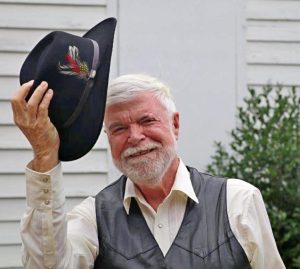 of Bill
of Bill
It has been a busy month (like normal). Willis and Abbey have a number of projects underway.
Henry is working full time and learning the trade.
Jerry and Will are working part time around their regular school subjects.
I am taking photos of some jobs weekly, writing this newsletter and doing some other back office work in addition to tackling my seemingly always growing “honey do” list.
Mandy and Jessy have opened their coffee shop, Colleton Coffee, in addition to their little boutique, Twig. Fortunately, the shops are near each other on the same street so they can hop between them easily. Colleton Coffee had a Grand Opening on March 25 but has had steady customers since their “soft opening” on March 5.

Colleton Coffee Grand Opening
The Grand Opening at Colleton Coffee was this past Saturday (March 25). Customers were lined up out the door. Stop by and see Mandy and Jessy at their boutique, Twig, or Colleton Coffee, both on Washington Street in downtown Walterboro.
Twig is open 10 to 5 weekdays and 10 to 3 on Saturday. Colleton Coffee is open from 7:30 to 3:30 weekdays and 9 to 3 on Saturday.
Sometimes, I see things that seem a bit odd and wonder about them. A while back, I used to wonder why if “oct” means eight as in octagon, why is October the tenth month and not the eighth month? Did someone way back when miscount? For that matter, “sept” means seven, yet September is the ninth month. The same for “nov” (nine) in November (11th month) and “dec” (ten) in December (12th month).
It turns out that way back the year began in the spring around the vernal equinox (when the sun is directly over the equator). That date is in March. Looking at it through the eyes of earlier man, perhaps that makes sense. In the spring, plants come to life, new animals are born, things seem to be new and perhaps that seemed a good time for the year to be new also. Maybe that is why God told the Ancient Israelites to start their year in the spring.
If the year did begin in March long ago, that would make September the seventh month, October the eighth month, November the ninth month and December the tenth month. The earlier months of the year were renamed to satisfy the egos of powerful men such as Julius Caesar (July) and Caesar Augustus (August).
That brings up another interesting observation. The months alternate in length between 30 and 31 days (with the exception of February). January is 31; February, 28; March, 31; April, 30; May, 31 and so forth. When you get to July, the pattern changes. Both July and August have 31 days. Following that anomaly, the same pattern of 30 then 31 arises. It turns out probably when Caesar Augustus hijacked the eighth month and renamed it after himself (blush), he could not bear to let old Julius’ month have more days that his newly named month, hence he bumped his month (now August) up to 31 days and resumed the alternation. It is a little surprising August does not have 32 days.
He took the day from February which, remember, was then the last month of the year. Perhaps that is why when we have a leap year, we tack a day on the end of February which would have been the last day of the year.
Speaking of leap years, normally they are every four years. If the last two digits of the year (like 23 for 2023) are evenly divisible by four, the year is a leap year and a day gets added to February. Doing that, however will cause the calendar to be slightly too long and get out of sync with the physical position in its orbit, so another rule was added: If the year ends with 00, (such as 2000) even though it is evenly divisible by four, it is not a leap year.
Wait, 2000 was a leap year and that is because there is a third requirement for leap year. It must be divisible by four and not end in 00 unless the third digit (0) for 2023 is divisible by four. The last two digits of the year 2000 were divisible by 4 (leap year), but ended in 00 (not a leap year), but the third digit (0) was evenly divisible by 4 so it was a leap year. The year 2100 will not be a leap year even though it ends in 00, the third digit (1) is not evenly divisible by four.
(Prior to 1752, the calendar had slowly gotten out of sync with the physical equinox, so an adjustment was made in England. The day after September 2, 1752 was September 14, 1752. September 3, 1752 through September 13, 1752 don’t exist.)
Our actual year is 365.242374 days based on the vernal equinox. Our (Gregorian) calendar with its leap year adjustments (97 leap years every 400 years) has the year averaging 365.2425 days, an error of 0.00031 days. That means the calendar will be off by a day every 3,000 or so years so it is not an immediate problem. That is amazing accuracy for a calendar developed in 1582 by Pope Gregory (but not adapted in England until 1752).
I suppose that is enough mountain climbing on mole hills and probably far more than you wanted to know about calendars. If you want to know the date, just look at your phone, computer or a calendar.
Starting this month, I’m going to include a short bio of our employees so you know a little more about us. Wendy, our newest hire is first.
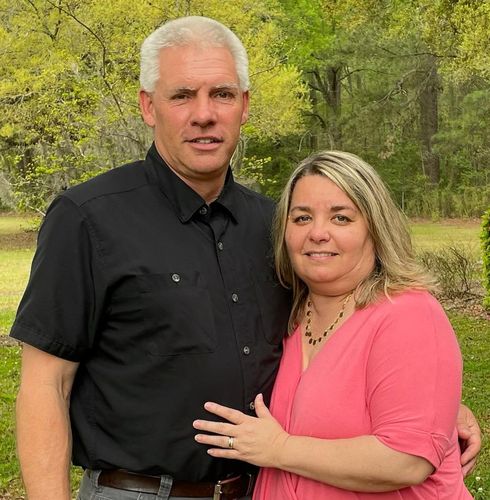
Wendy
This is Wendy and her husband, Shane.
Wendy is our latest employee. She will be taking over the data entry (there is a lot of record keeping that goes on in the background), answering the phone and setting up appointments.
This will free up Abbey and Jessy for other tasks.
Home Insulation
One of the purposes of building a home, a very basic reason, I admit, is to make the living area comfortable. If you are living in a tent, it is often not very comfortable. I remember when I was in Basic Training back in the late 1960’s being on bivouac (bĭv′-wăk) at Fort Gordon in the winter.
Bivouac (an unusual word with 3 vowels in a row) meaning a temporary encampment with little or no shelter. Our very small two man tents certainly qualified as “little shelter.”
It was so cold that many soldiers – about half — in our company caught pneumonia and wound up in the base hospital. Eventually, they cut our bivouac week short. We surely could have used some living area comfort.
Temperature, precipitation and humidity are probably the most important conditions to moderate in a home. Living in a cave might work, but it would also minimize another condition that we humans like: daylight.
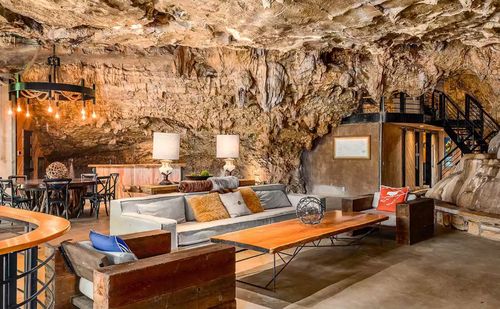
This is Beckham Creek Cave house in the Arkansas Ozarks. Although it looks beautiful and comfortable, it is short on windows.
How do you go about moderating the temperature and moisture without sacrificing the light and outdoor views?
The first thing is to build an airtight shell on the outside of your home. This is one purpose for house wrap. It prevents (or perhaps minimizes is a better word) air infiltration. You might wonder with plywood walls how there could be air leaks. The potential leak areas are around any openings such as doors, windows, electrical outlets, hose bibbs, chimneys and other penetrations.
Any opening needs to be sealed. After insulation is installed, we often do a blast door test to find any air leaks. Once we locate them, we fix them with foam or caulk or whatever we need to seal the house.
Stopping air infiltration is the first step in conditioning a home. The second is insulation. Over the years, we have found the best approach to insulation is to use spray in foam in the roof between the rafters and in the walls between the studs. If the home is built on a slab, there is no insulation under it (at least not here in the South). If it is a framed floor we will either use spray foam between the joists or completely encapsulate and insulate the crawlspace. By carefully insulating a home, we can minimize the amount of heating and cooling that are required to maintain a comfortable temperature.
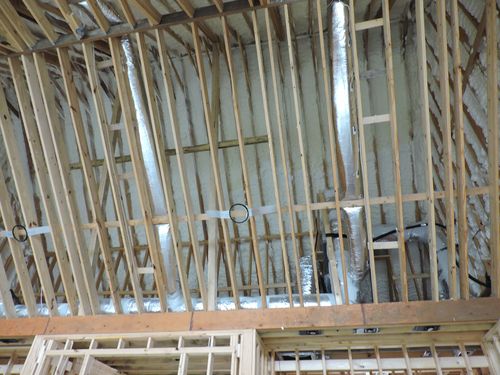
By using spray in foam insulation (white) in the roof rather than insulation above the ceiling, the attic temperatures are moderated and the home can be heated or cooled more efficiently.
Insulation is rated by how much it resists heat flow. R-13 is often used in walls. The roof or ceiling is higher because they are more exposed to the Sun and heat. R-26 would allow half the heat to pass through it as R-13 would. You might wonder why not use R-100 and essentially eliminate the heat flow altogether. The answer is that the R rating of insulation depends upon the material and the thickness. Fiberglass batts have an R rating of roughly 3.5 per inch of thickness. An R-100 fiberglass insulation (if it existed) would be about 30-inches thick.
Since the fiberglass insulation is soft, could R-30 (8¼” thick) insulation just be squeezed into a 2×6 (5½ inches) wall? The answer is, yes, it could. Doing that would be a hollow victory since it would perform worse than the 5½ inch thick R19. Fiberglass insulation works because it traps air among the fibers. If you squeeze it, there is less room for air, hence less resistance to heat flow. The R-rating of fiberglass insulation depends upon the insulation not being compressed.
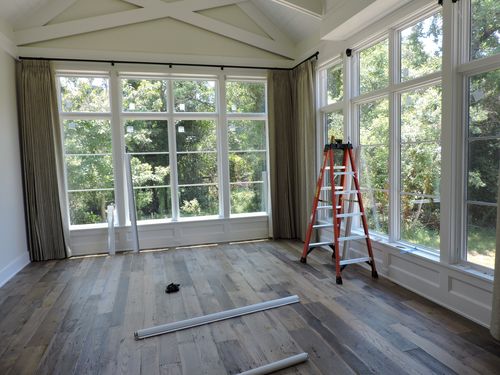
Walls with a number of windows let in a lot of light, but they are also a source of heat infiltration.
There are two types of heat than can flow through windows. One is radiant energy. You experience radiant energy when you notice the difference in heat when you stand in the sun (and receive radiant heat from the Sun) and when you stand in the shade (and don’t receive radiant energy from the Sun).
Radiant energy can also cause rugs, linens and other materials to fade in color. Film on windows facing the Sun will minimize the effect of radiant energy. New windows can have the film sort of chemically applied to the glass. This type of “film” is called Low-E (low emissivity). There are at least three levels of Low-E coatings available. We use the most effective level for windows in direct sunlight. The coating does make the room slightly darker, but unless you have a Low-E and normal window in the same room, you don’t notice it. Low-E reduces the fading and the radiant heat transfer.
The second way heat enters your home is by passing through the window. The outside ambient temperature heats or cools the window glass and it in turn heats or cools the inside air temperature. Glass is a very poor insulator. It is about R-1 for a single pane window. Obviously you don’t use fiberglass insulation to improve the performance, so what do you do?
The answer is to add a pane of glass and put some clear gas (argon or air) between the panes as insulation. With this combination, you can get the rating up to R-4 or so. Double panes also help keep out noises from outside, which may be good or bad. If your dog is barking to warn you of something, not hearing him might be bad. Another benefit of double pane glass is that the inside is much less likely to ‘sweat’ (accumulate condensation on the glass) at certain times of the year. Double pane windows are required by code for energy purposes and are installed in all of our projects by default.
If two panes are good, how about three? Triple panes give you approximately an R-8 rating. They are much more expensive and heavier than a single or even double pane window. Then benefit of triple-pane windows is not as great here in the South as in colder regions and so aren’t often used in our area.
For some reason window insulation rating is often given in a U rating rather than an R rating. The secret formula to convert R to U is just invert it. An R-2 rating is the same as a U-0.5 rating. With R ratings, the higher, the better. With U ratings, the lower the better.
Do you have any questions about making a weather tight house or perhaps making energy saving changes to your house? We can help. Call or text us (843 846 2500), email us (info@willissinclair.com) or stop by one of our job sites and chat with us. No cost or obligation to you of course.





No Comments